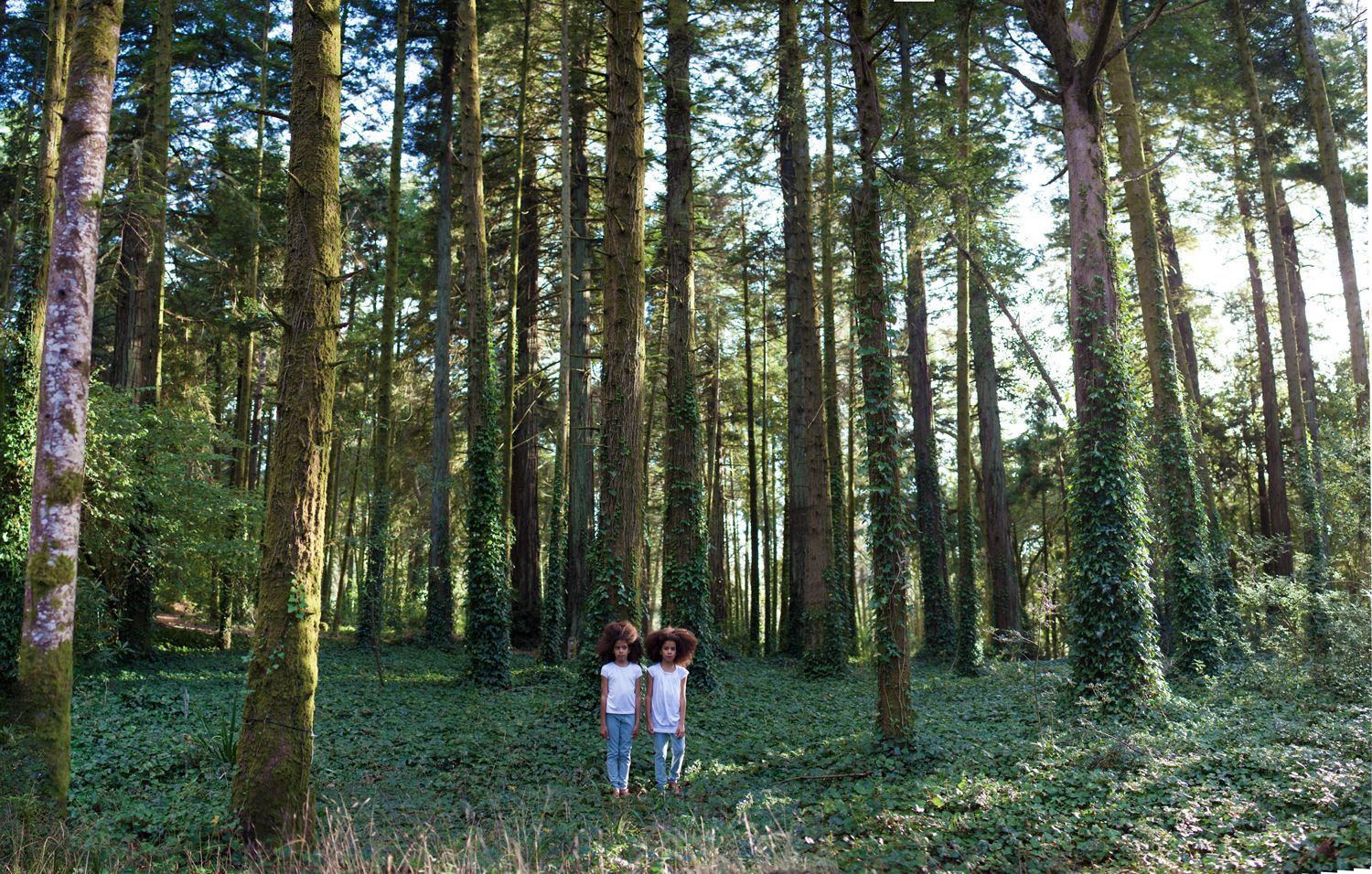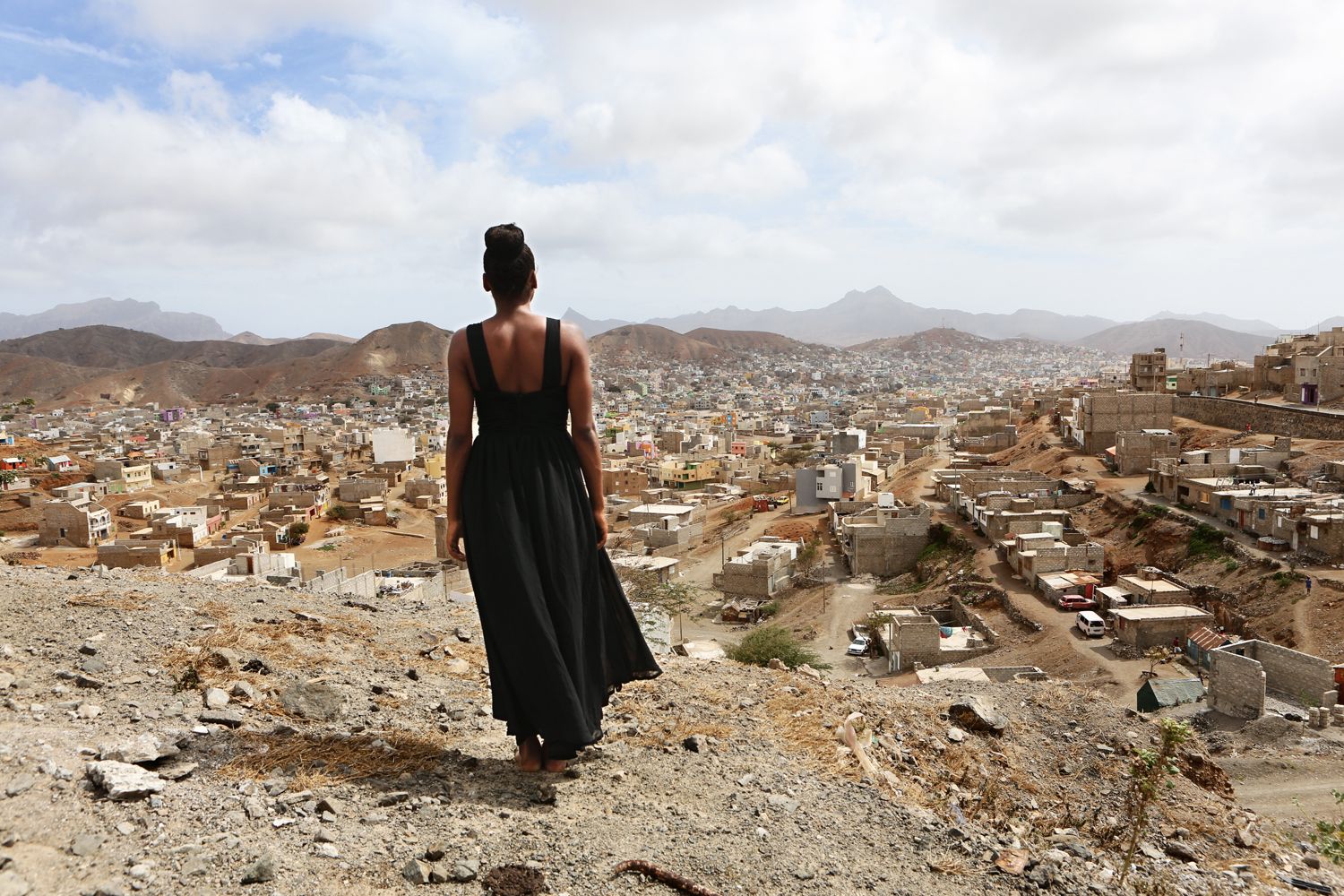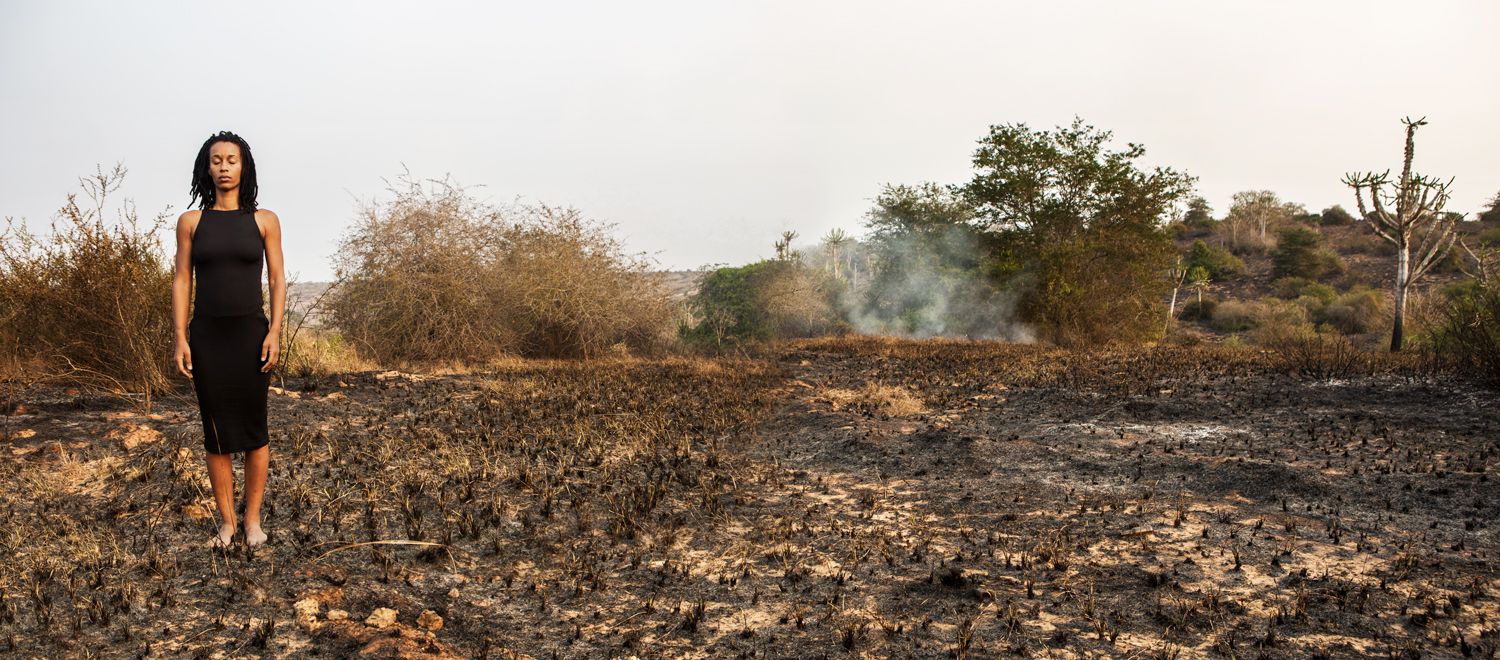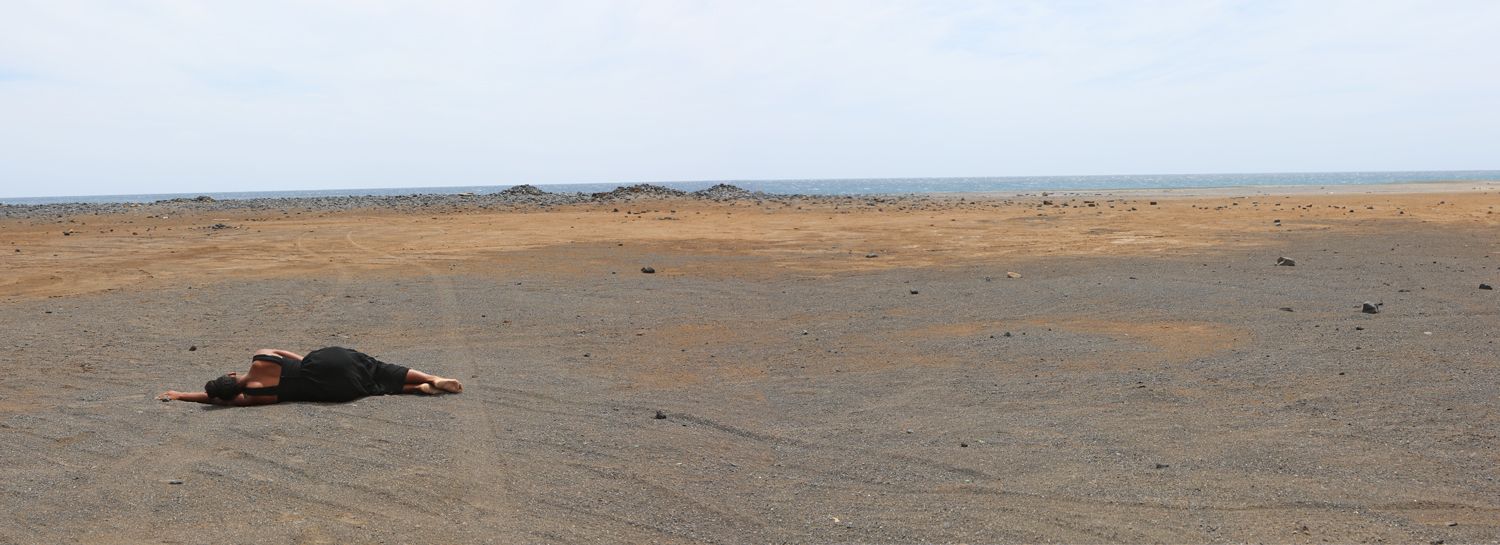The Land of no Melancholy
Mónica de Miranda & Katherine Sirois



This short selection of Mónica de Miranda’s photographic works focuses on the relationship between the human and the land, not in a way where the land would belong to the characters, but in the way where the characters belong to the land.
Caspar David Friedrich’s Wanderer above the Mist[1] seems to resonate through them (at least from an art historian’s perspective), perhaps to guide us towards the possibility of approaching these pictures from the modern aesthetic notion of the sublime as the affective experience and emotional involvement brought by a strong vision of boundlessness, strength and mystery.
Indeed, they can appear to the viewer like a contemporary variation on the theme of the introspective journey triggered by the retreat to the outdoors, by the loneliness and the silence, by the distance movement, the elevation of the view point and by the self confrontation with the vastness of the surroundings. The figures seem to be captured by the landscape as much as they are absorbed within the inner vision reflected by the world they contemplate or fuse with, eyes wide open, eyes wide shut, standing upright or lying down, seen from the front or from behind.
But unlike the traditional European romantic figure of Friedrich’s wanderer, Mónica de Miranda’s figures are no more masculine, white and rich. Instead, and this is a statement, they are women, black, and certainly not as wealthy as the members of the German bourgeoisie youth of the 19th century. Moreover, unlike the landscape depicted by Friedrich, untouched, pure and unapproachable in it’s impressiveness and solemnity, the current landscapes in which the female characters appear are either explicitly wounded or marked by some sort of secrets – always shaped by human activities – as much as they are reachable and close, expressing a certain complicity with the feminine figures.
The theme of the frontier is a central one in the work of Mónica de Miranda, often chasing the paradox between the manifest beauty and abundance of Nature and the devastating effects of the human systems based on war and unlimited exploitation. As Nature itself, trees, soils, waters, wild animals…women and indigenous communities of all kind are frequently among the first victims of these endless games of predation and of unbridled greed for territories, wealth and power. In fact, two whole centuries of colonialism politics, of struggles for independence and freedom, of civil wars and armed conflicts to secure lands and raw materials for the industry have run up since our reflective wanderer above the sea of fog. Was it, through the mist of boredom, a call for the exploration travels of remote and unknown lands, making Friedrich’s wanderer look like a gentle captain standing on the bow of his vessel? Women in Mónica de Miranda’s pictures do not appear explicitly as conquerors, combative or defiant. They rather seem meditative, peaceful and vulnerable in their way of marking their territory, still hesitating in their expression of self-determination between rigidity, formality and easiness. As women, they belong to the land and the land, with its strength and fragility, becomes their territorial space of self-expression.
If the notion of the «sublime» as understood in the context of chemistry as well as in the secret language of alchemy (designating the transformational phase of a substance going «directly from solid to gaseous state with no interval of liquid», inducing the «metaphor of heavy turned to light and of solid and confined turned to vaporous and expansive»[2]) can also be seen in Friedrich’s painting – feet on the rocks, head in the clouds – the transformational movement in action in Mónica de Miranda’s images can be felt the other way around. Indeed, the opposite notion of the sublime, namely the «sublate», seems to be operating in these cases, as the figures don’t free themselves from the earthly weight to elevate and expand their wandering spirit in faraway lands. On the contrary, they are grounded to the soil and their emotional response to the vision is more of a visceral one.
On the spatiotemporal horizontal axe, the imaginary movement alluded seems equally inverted. Are the female figures represented in the act of returning to their birth lands to explore the collective memory and to share with their relatives who once remained a part of the turmoil and suffering they fled from? If the romantic wanderer has been seen as a metaphor of the unknown future[3], the future of these women seem to be deeply rooted into the past. Peacefulness doesn’t mean absence of memory and oblivion. It can express acceptance and the will to move forward from where they stand, from the Land itself as it reminds, beyond the politicized and delineated space, its extraordinary capacity of nurture, resilience and recovery. The act of going away generates an infinite nostalgia as the act of returning back provokes an infinite melancholia. Like plants, humans have invisible roots growing deep into the earth to the sounds of the (lost) music and languages of childhood[4]. The main common point between the romantic wanderer and Mónica de Miranda’s figures would lie in this peculiar tension between the immobility and enclosure of melancholia and the dynamism of vital energy that silently recalls, opens, expresses, sets in motion and arises new perspectives.
Katherine Sirois
Footnotes
- ^ Kunsthalle Hamburg, 1818.
- ^ Carolyn Korsmeyer, «Fear and Disgust: The Sublime and the Sublate», in Revue Internationale de Philosophie, 2008/4, n° 246, pp. 367-379.
- ^ Ron S. Dembo; Andrew Freeman, The Rules of Risk, John Wiley and Sons, 2001, pp. 10.
- ^ Jean Starobinski, L’encre de la mélancolie, Seuil, 2012.




